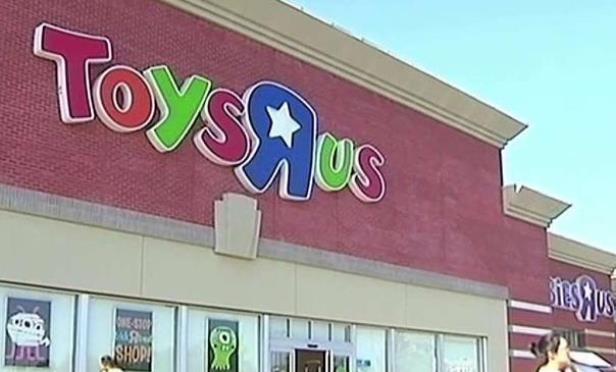 This year's bankruptcy of Toys R Us returned nearly 350,000 square feet to the local market.
This year's bankruptcy of Toys R Us returned nearly 350,000 square feet to the local market.
DALLAS—Despite the so-called death of retail, which includes this year's bankruptcy of Toys R Us returning nearly 350,000 square feet to the local market, Dallas/Fort Worth's retail fundamentals are strong. Occupancy dipped a mere 10 basis points during the second quarter, following the addition of more than 580,000 square feet of new deliveries, which came on line significantly pre-leased, according to CBRE's Dallas/Fort Worth retail marketview for second quarter.
Malls and big boxes have taken the brunt as these closings involve three Sears mall-anchor stores in addition to the Toys R Us stores, resulting in more than 1 million square feet of vacancy. Once the largest retailer in the US, Sears has slashed its store count in half during the past five years. The embattled department store chain is quietly closing another 72 stores, in addition to the 166 stores already planned for the chopping block this year. The closures include three stores in North Texas located in Denton, Fort Worth and Lewisville, according to the CBRE report.
However, based on interest from concepts ranging from fitness uses to multi-tenant redevelopment, it is expected that the best-located of these vacancies will be absorbed or redeveloped within the next 18 months, according to Weitzman. The market has been able to maintain steady occupancy in the face of some of these major store closings because the closures are being largely offset by preleased new construction and the backfilling of large retail vacancies. The Sears stores are set to close by fall 2018 and operators are seeing interest in the locations as anchor or multi-tenant space. Together, these closed stores represent only about one-half of 1% of vacancy, based on DFW's retail inventory, which limits the overall negative impact on the market's health.
“Retail is shifting and changing,” Dana Walters, vice president of business development, MYCON Construction, tells GlobeSt.com. “New concepts in entertainment, theaters and experiential retailers have evolved and are doing just great.”
Dallas-Fort Worth's retail market as of mid-year reported an occupancy rate of 92.5%, a slight increase over year-end 2017's 92.4% occupancy. The occupancy rate is one of the market's highest in more than three decades, second only to the 92.7% occupancy at year-end 2016. The mid-year occupancy rate is based on Weitzman's review of a total DFW retail market inventory of 198.1 million square feet of space in projects with 25,000 square feet or more, the largest retail inventory for any metro area in Texas.
For 2018, leasing in existing centers is boosting occupancies by eliminating vacancies both large and small from the market. Many of these projects involve renovations and redevelopments, with examples including The Shops at Willow Bend in Plano, The Hill in northeast Dallas, a new Central Market in the Preston Hollow neighborhood, and sister centers Trinity Valley and Trinity Plaza in Carrollton, according to Weitzman's report.
Despite this growth, IKEA recently scuttled plans for a Ft. Worth store. The Swedish retail giant rescinded its decision to open a 289,000-square-foot location there, scheduled to be a part of a $100 million 478,000-square-foot mixed-use plan. Slated for a summer 2019 opening, this would-be IKEA store has joined the likes of other recently scrapped stores in Nashville, Glendale, AZ and Cary, NC, with the retailer citing a “rapidly changing retail environment” as the reason for its change of heart.
However, for the better part of the last decade, the story of DFW has been one of swift annual growth. The metro added 146,000 new residents in 2017, more than any US metro, according to the US Census. Year-to-date, the metroplex posted a net gain of 55,000 new payrolls with unemployment below 4% since February 2017.
© Touchpoint Markets, All Rights Reserved. Request academic re-use from www.copyright.com. All other uses, submit a request to [email protected]. For more inforrmation visit Asset & Logo Licensing.







